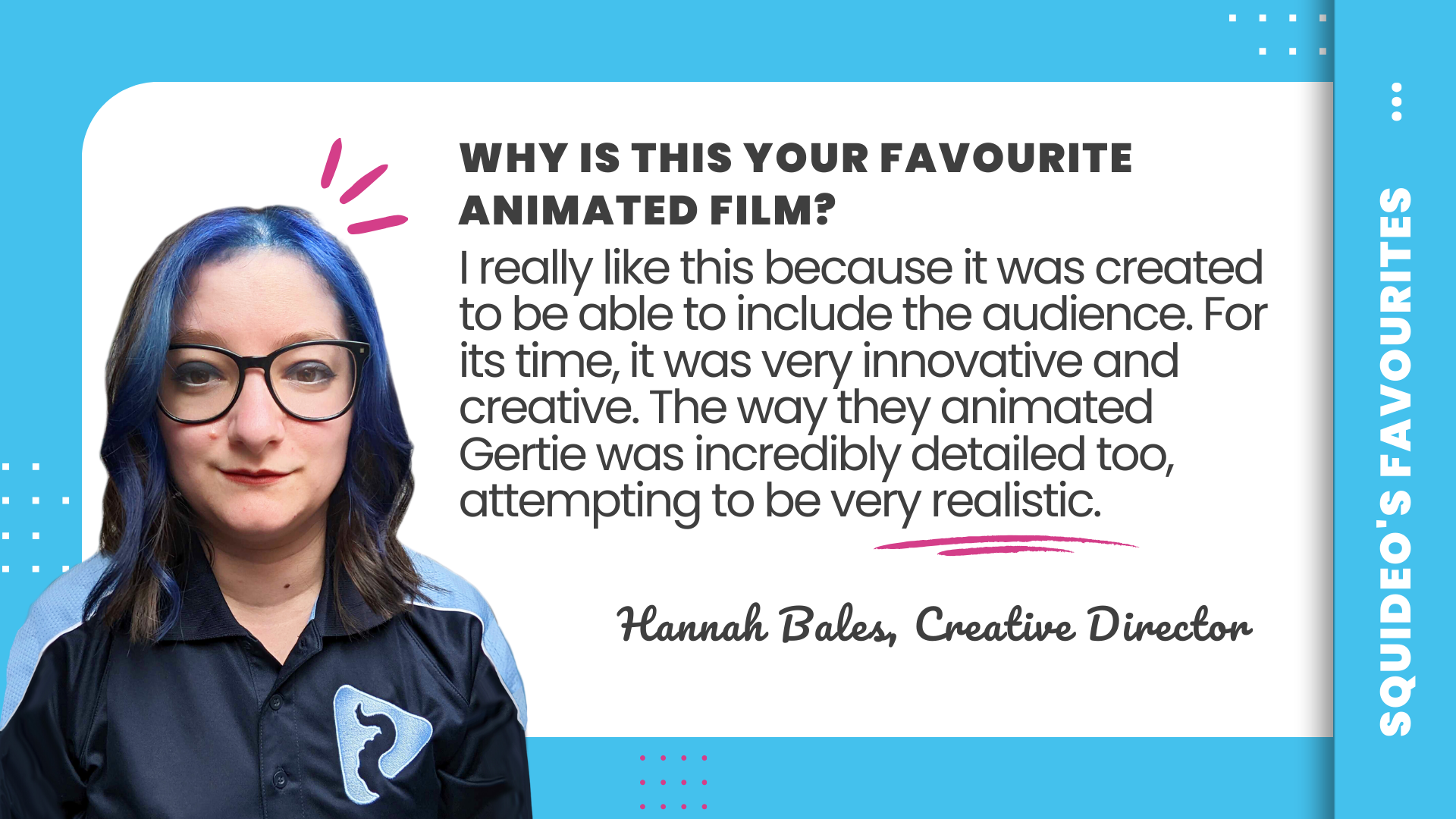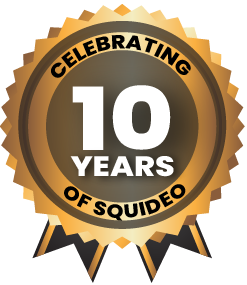Squideo’s Favourites: Gertie the Dinosaur
Released in 1914, this short film was created by Winsor McCay – a vaudeville actor who started producing cartoons in 1911. As one of McCay’s best preserved works, Gertie the Dinosaur has gone down in animation history for its innovative techniques and for a time was counted as the earliest animated film until other records were found.
Despite its short running time of twelve minutes, the piece has inspired countless successive animators from Walt Disney to Max Fleischer. It was chosen for this series by Creative Director Hannah Bales who credits Gertie the Dinosaur with introducing animation techniques still used to this day.

We’re diving into the production behind this animated film, exploring the style and techniques which came together to create this compelling story. In the meantime, if you have an idea for an animated video of your own get in touch with the Squideo team.
Creating a Story
Winsor McCay started working as an artist before becoming an illustrator and cartoonist for numerous Chicagoan newspapers. In 1911, McCay came to work at the New York American, owned by the infamous William Randolph Hurst. That same year, McCay self-financed and released his first animated film Little Nemo in Slumberland.
It was released in cinemas and McCay used the piece in his vaudeville act – a profession he maintained alongside his newspaper career for several years until Hurst convinced him to prioritise his illustrations. Little Nemo in Slumberland used characters McCay had created for a comic strip at the New York Herald, his former employer, a series McCay used to develop his use of colour and fine hatching. Little Nemo was already popular with audiences, first debuting in 1905 and receiving a stage adaptation in 1907.
Audiences were entranced by the 1911 short film, which became popular enough for McCay to colourise the frames. Sadly, like many of McCay’s early works – including How a Mosquito Operates (1912), Flip’s Circus (1918) and The Centaurs (1921) – only fragments of the film have survived. Which led to the later Gertie the Dinosaur (1914) becoming McCay’s signature film.
As Gertie the Dinosaur was created for McCay’s vaudeville act, the film is timed to create the illusion that McCay – standing beside the screen – is controlling Gertie. To end the film, McCay walked toward the screen and was replaced with an animated equivalent that Gertie carried away. This use of animation showed audiences what potential this developing medium had, and inspired a wave of new animators to follow in McCay’s footsteps.
William Fox, founder of the Fox Film Corporation, paid McCay to extend the film to include a live-action introduction so Gertie the Dinosaur could be shown in cinemas without McCay’s presence. Despite this success, McCay’s own employer William Randolph Hurst banned their newspaper from mentioning Gertie the Dinosaur. Comic strips were very popular in newspapers and, as one of his most popular illustrators whom he had bought away from the New York Herald, Hurst wanted McCay’s attention at the New York American rather than his own side-projects.

McCay would make ten films in total, an impressive achievement considering he almost entirely worked alone. His post-war release, The Sinking of the Lusitania, in 1917 garnered him additional critical acclaim and cemented McCay as an animation pioneer.
“McCay distinguished his work from that of his contemporaries in the field by the sophistication of his elaborate graphics, the fluid movement of his characters, the attempts to inject personality traits into those characters, and the use of strong narrative continuity.” John Canemaker
In an episode of Walt Disney’s Disneyland in 1955, Disney paid homage to Winsor McCay and Gertie the Dinosaur – inviting McCay’s son Robert to act as a consultant. The influence of Gertie the Dinosaur still lives on at Disney, spanning from its first reference in 1940’s Fantasia, to their animatronic dinosaurs for New York’s World Fair in 1964, and now Gertie’s ice cream stand opened in Disney’s Hollywood Studios at Walt Disney World in 1989.
Animation Style
Created from over 10,000 drawings, Gertie the Dinosaur was a tremendous undertaking almost entirely created by Winsor McCay with his neighbour John A. Fitzsimmons acting as an assistant. Since the film would form part of his vaudeville act, McCay needed a showstopper – and he wanted to indisputably show the world that his animation skills were unrivalled.
When his 1912 film, How a Mosquito Operates, had debuted some audience members thought the mosquito was operated on wires. That same year, McCay announced his intention to create a film about dinosaurs.
Despite the short time frame between both films, Gertie the Dinosaur shows significant progress which left audiences with no doubt that they were watching animation. More details were added to the characters and, importantly, backgrounds were added to the frames.

McCay used fine hatching to add shadows and depth to Gertie’s movement. He established the use of now standard animation techniques, including “key drawings, effective registration of images to prevent “jitters”, and the concept of “cycling” action that reused drawings.”
Using a constructed dinosaur skeleton on display at the New York Museum of History for reference, McCay worked in painstaking detail to make Gertie as realistic as possible. It worked. According to McCay:
“When the great dinosaur first came into the picture, the audience said it was a papier-mâché animal with men inside of it and with a scenic background. As the production progressed they noticed that the leaves on the trees were blowing in the breeze, and that there were rippling waves on the surface of the water, and when the elephant was thrown into the lake the water was seen to splash. This convinced them that they were seeing something new - that the presentation was actually from a set of drawings.” Winsor McCay
McCay’s work continues to have an influence over modern animators, and since 1972 the Winsor McCay Award has been given in recognition of individuals whose work shows outstanding contributions to excellence in animation. Famous recipients include Bill Hanna, Joseph Barbera, Mel Blanc, Otto Messmer, Roy E. Disney, Tim Burton, John Lasseter, Nick Park, Brad Bird and Matt Groening.
Get Started With Your Video
Inspired to create a unique animated video of your own? Watch the video below to get a better understanding of how Squideo can help promote your business, then get in touch with us to find out more!













